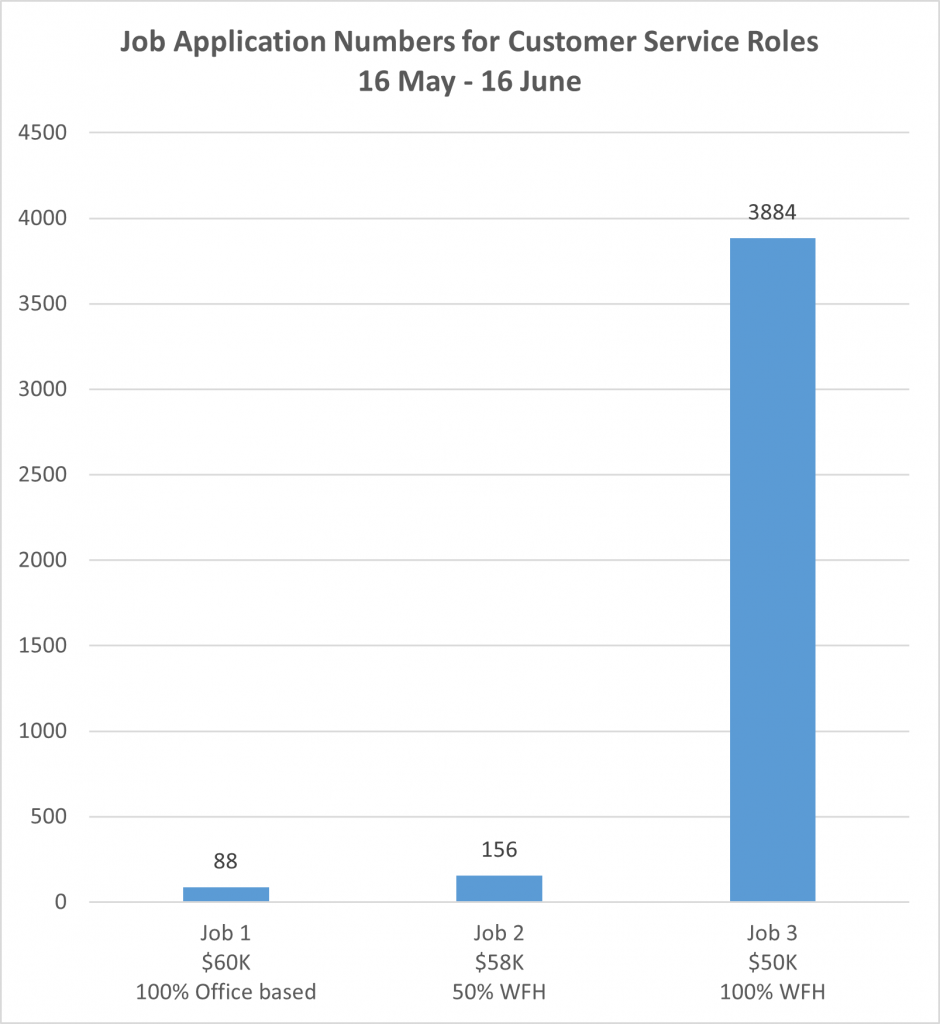If you are recruiting for desk based, computer based of phone based roles in 2022 I have good news for you – there are endless pools of candidates available and wanting to work for you!
Wait, what??
That’s right, you can get thousands of applications per job each month!
But we aren’t getting close to that many applications. How?
Well read on and I’ll show you how…
Three Customer Service Jobs with Dramatically Different Application Volumes
Let’s compare the volume of responses from three near identical advertisements that we placed at SMAART Recruitment on the 16th May 2022, one month prior to this article being written. At SMAART, we specialised in high volume recruitment for contact centres (think banks, insurance, utilities contact centres).
All three advertisements are targeting identical candidates for phone based customer service positions. There are some minor differences we are preferencing at the screening stage, but at the advertising stage the three are like-for-like. For each job, we are looking to hire in volume (make more than 10+ hires).
All roles were advertised in identical ways (same job boards etc, posted during the same 24 hour period).
Same, but different
All jobs are customer service roles, the only two real differences being the salary and the allowance of work from home:
Job 1: $60K + super, 100% office based (Melbourne)
Job 2: $58K + super, 50% office, 50% WFH (Melbourne)
Job 3: $50K + super, 100% WFH
Job 2 is paying closest to the industry average salary (around $56K + super from data collected 6 months ago in our 2022 Contact Centre Best Practice Report). Job 1 is paying slightly above it (but more towards industry average given the salary inflation of the last 6 months) and Job 3 is pay at least 12% below the industry average.
When it comes to WFH, there are significant differences between the three roles as stated. In this case study the more the role is paying, the less there is the opportunity to WFH.
The results

Deciphering the results
Job 3 received a total number of 3,884 applications. Job 2 received 156 and Job 1 received 88.
Whichever way you look at it this is staggering. Despite a significantly lower salary, Job 3 received 16 times as many applications as Job 1 and Job 2 combined.
What does this mean? Put simply, the ability to work from home is the No.1 factor job seekers are looking for in their next job. And to be honest, it doesn’t really matter if you are meeting the rest of their selection criteria – if it doesn’t offer WFH, then everything else is irrelevant.
In this albeit narrow case study (it is just a small example of a snapshot in time) candidates are happy to ignore a job paying 20% more if it doesn’t offer WFH. In fact, a large percentage of the applicants for job 3 were prepared to take a pay cut to move to a role that is 100% work from home.
Key takeaways
If you are offering a role that is largely WFH then scream it from the roof tops! Make sure that when you are advertising the role it is the first thing that people know. There are thousands of candidates wanting to work for you.
If your roles are 100% work from office then stop saying it’s “too expensive” to move to a WFH home. This case studies show a potential saving of 20% in wages for WFH staff. It’s probably also time to check in with reality that WFH home is here to stay. Our research show that only 4% of staff want to work from an office 5 days a week.
If your role is “hybrid” (e.g. 2 days in office, 3 WFH) then make sure this is a key feature of your advertising. Be transparent with job seekers around exactly what the arrangement is with staff. If you can offer 2-3 days WFH it needs to be stated loudly and clearly.
Good luck with your recruitment over the coming months.







